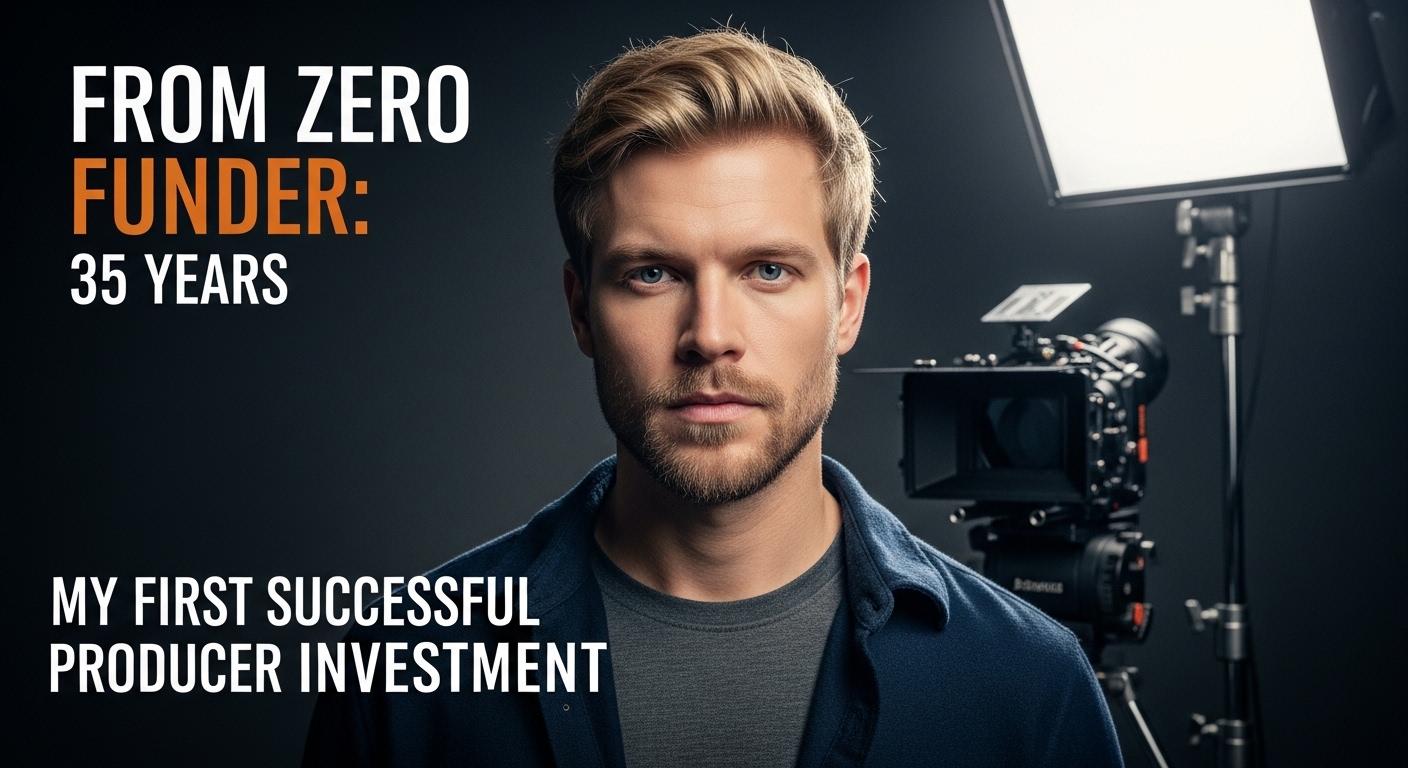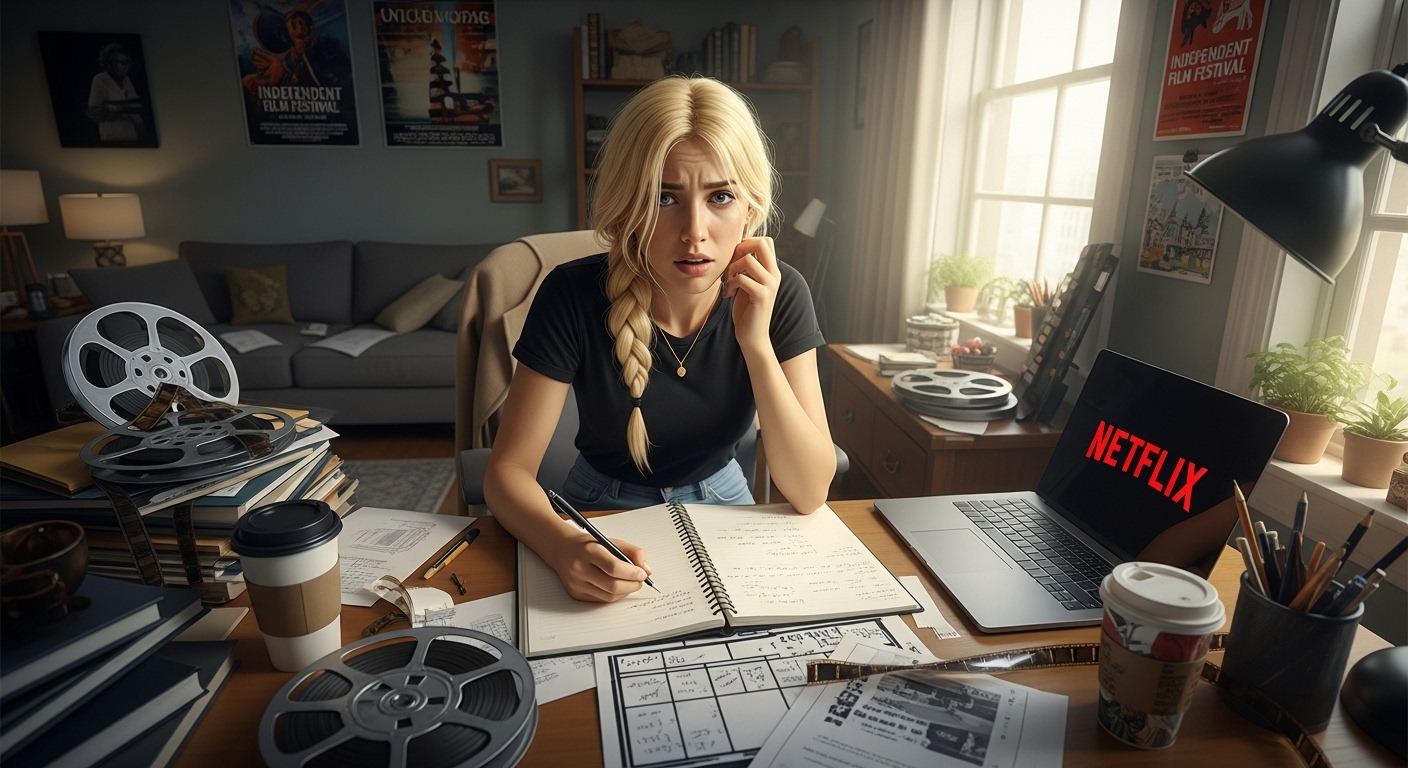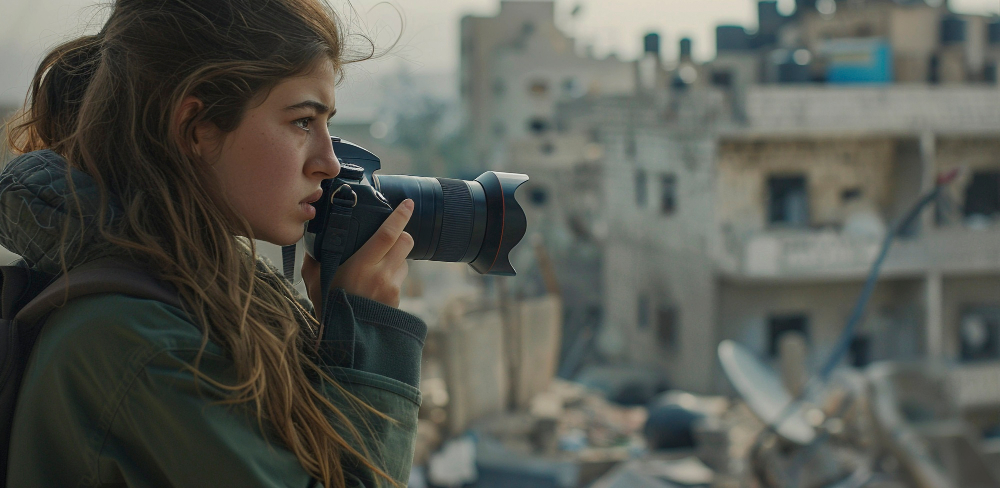Behind the Scenes: Unveiling the Crucial Roles of Production Crew in Filmmaking
Filmmaking is a collaborative process, requiring the contributions of a wide range of professionals to bring a script to life on the big screen. One of the most crucial parts of this process is the production crew. These individuals are responsible for ensuring that everything from lighting and sound to costume and set design work seamlessly together to create a cohesive final product.
Definition of Production Crew in Filmmaking
The production crew encompasses all those individuals who are involved in making a film but are not part of the creative team responsible for writing or directing it. This includes everyone from camera operators and sound engineers to makeup artists and costume designers, all working behind the scenes to bring a movie or TV show to life.
Some specific roles within the production crew include producer, director, cinematographer/director of photography (DP), editor, and production designer/art director. While each member has different responsibilities, they all work together as part of this team to achieve their shared goal: bringing an idea from script form into reality.
The Importance of Production Crew in Filmmaking Process
Without effective collaboration between production crew members, even the most ambitious film project runs the risk of falling apart before its completion. The role that these professionals play cannot be overstated when it comes to creating high-quality cinematic experiences.
Production crew members help ensure that every element comes together seamlessly– from casting actors who fit into their roles perfectly and designing sets that transport audiences into alternate worlds, they make sure no detail goes overlooked. This is why not only do they contribute significantly to making movies possible but also play an essential role in making them great.
High-Level Overview of Production Crew Roles
In any film production, the production crew plays a crucial role in bringing a movie to life. A well-organized and efficient production crew can make all the difference between a well-executed film and a mediocre one. In this section, we will take a look at the different roles played by the production crew and their responsibilities.
Director
A director is responsible for bringing together all of the elements of a film, from casting to cinematography, into one cohesive vision. They work closely with actors and actresses on set to ensure that they deliver their best performance possible.
Directors must also develop an eye for detail, as they are responsible for overseeing every aspect of the filmmaking process, from script development to post-production. Moreover, directors must be able to communicate effectively with their team members in order to execute their vision successfully.
They need to have strong leadership skills that enable them to manage different personalities effectively while staying focused on achieving their goals. Several critically acclaimed films have been credited solely due to the director’s creative vision & execution – including Christopher Nolan’s “Inception” & James Cameron’s “Titanic”, which went on to win 11 Academy Awards.
Producer
A producer is responsible for overseeing every aspect of the fundraising, scheduling, and hiring process required in making a movie happen. They are typically involved from pre-production through post-production stages; working with everyone from directors and writers to actors and distribution companies. Producers also act as liaison between different department heads such as art directors or location managers throughout filming–as well as handling budgets & legal obligations related to productions.
They are tasked with ensuring that everything runs smoothly behind-the-scenes so that on-screen magic can be achieved! Some famous producers known for delivering hits after hits include Steven Spielberg, George Lucas & Kevin Feige (Marvel Cinematic Universe).
Cinematographer/Director of Photography (DP)
The cinematographer/director of photography (DP) is responsible for creating the visual style of the movie. They work closely with the director to decide on things like camera angles, lighting, and color to create a specific look and feel for each scene. This role demands high technical expertise & a deep understanding of camera equipment & techniques to capture the director’s vision in the best way possible.
An experienced DP can also help add depth to scenes using techniques such as focus, framing, or depth-of-field. One example would be Roger Deakins winning an Academy Award for his work in Blade Runner 2049, which received praise for its stunning cinematography & visual effects.
Production Designer/Art Director
The production designer/art director oversees all aspects related to set design: props, costumes, scenery etc., and ensuring that all elements are cohesive with each other while also adhering to the overall vision laid out by the director. It is a highly imaginative role that requires substantial creative vision & implementation skills. A great production designer has an eye for detail and understands how different colors and textures will impact how a scene appears on screen.
Additionally they must ensure that everything remains within budget while still delivering exceptional results. A classic example being Ken Adam’s production designs in James Bond films such as Goldfinger or Dr.No which made lasting impressions on viewers worldwide.
Editor
The editor is responsible for taking all of the footage shot during filming and piecing it together into a coherent story. They must consider factors like pacing, timing of cuts, sound design and special effects (if any) required during post-production stages while working closely with directors/producers. An editor must have strong attention-to-detail skills as well as technical aptitude , especially when working with complex software systems such as Adobe Premiere Pro or Final Cut Pro.
They play a crucial role in transforming raw footage into a seamless final product that evokes the filmmaker’s intended emotions from the audience. For example, the late Thelma Schoonmaker who worked extensively with Martin Scorsese, won several awards for her editing work in films such as “Goodfellas” & “Raging Bull”.
Niche Subtopics Within Production Crew Roles
Director: Casting, Blocking, and Directing Actors/Actresses
The director is responsible for bringing the script to life through the actors and actresses they hire. Casting is a vital part of the production process as it sets the tone for the rest of the film. The director’s casting choices can make or break a film’s success.
It takes a lot of time and effort to find the right actors who can play specific roles while also embodying certain characteristics that fit within a particular story’s narrative. Once an actor has been cast, it is up to the director to work with them on blocking and directing their performance.
Blocking refers to where actors move on set, how they stand and interact with each other physically. The blocking is determined by camera placement, lighting, and sound design.
The director must plan all these elements carefully when working with actors in each scene. Directing actors goes beyond just telling them where to move on set; it involves guiding them through their performance, helping them connect emotionally with their character’s motivations while also staying true to the overall story arc. A great director knows how to communicate effectively with their cast members, building trust so that they can create scenes together that are both compelling and authentic.
Producer: Budgeting, Scheduling, and Hiring Crew Members
Producers are responsible for managing every aspect of the production budget while ensuring that all crew members are paid fairly for their work. They must also coordinate schedules between cast and crew members along with locations used in filming.
When creating a budget for a production project, producers must consider everything from equipment rentals to location fees as well as salaries for everyone involved in making the movie happen; this includes directors’ assistants who help manage schedules or even those in charge of catering food during breaks between scenes!
Scheduling is another essential aspect of producing. It’s the producer’s job to make sure everyone knows when and where they need to be for each shoot day.
The schedule must be planned carefully so that no time is wasted, and everything runs efficiently. Hiring crew members is a complicated process.
A producer must ensure he or she has the right team in place for each specific project and find people who can work together seamlessly. This involves looking at resumes, conducting interviews, and checking references.
DP: Camera Placement, Lighting Design, and Shot Composition
The Director of Photography (DP) oversees all camera operations on set. From camera placement to lighting design and shot composition. Camera placement is crucial in setting the tone for a scene or a movie.
The DP works closely with the director to determine the best angles and locations from which shots should be captured. Lighting design also plays an essential role in filmmaking.
The DP works with lighting technicians to create different mood effects by using light or shadow on set; it can make a scene look sinister or romantic depending on what they want to convey. Shot composition refers to how all elements of a shot are arranged within the frame from foreground to background, ensuring that everything looks visually appealing while contributing meaningfully towards telling the story.
Production Designer/Art Director: Set Design, Prop Selection, and Costume Design
The production designer/art director is responsible for creating sets that bring life into scenes as well as finding props that add authenticity or detail touches like adding graffiti painted walls that might capture attention during watching times while contributing towards storytelling Set design involves designing structures like buildings or cars in movies that will give audiences an idea of where characters are living or traveling throughout their journey through films.
Prop selection requires meticulous thought about objects used in various scenes within movies; this includes anything from furniture items such as chairs or tables found inside someone’s house up-to larger items like cars or trucks that might be used for transportation in the film. Costume design is another important aspect of filmmaking.
The designer must consider many factors such as the character’s personality traits, time period setting, and story context. Every costume piece needs to support the narrative and allow audiences to connect emotionally with the characters as they journey through the story arc.
Editor: Selecting Shots, Cutting Scenes Together, and Adding Sound Effects
The editor is responsible for taking all of the raw footage shot on set and transforming it into a polished final product that can be enjoyed by viewers. The editor spends hours reviewing every single take to ensure that only the best shots make it into each scene. Cutting scenes together involves deciding on shot order, sequence length and making sure everything is coherent (e.g., no continuity errors) while still being visually stunning.
Sound effects are also a vital part of post-production work. Editors will use sound files to enhance specific moments in films or create ambiance within scenes using background tracks or natural sounds like rainfall or wind blowing past buildings can add authenticity.
Overall, each production crew member plays an essential role in creating a movie. From pre-production planning throughout filming days up-to post-production editing processes; there’s no doubt everyone involved contributes towards making your favorite movies possible!
Rarely Known Small Details About Production Crew Members
Director’s Assistant – Responsible for keeping track of the director’s schedule
While the title might seem self-explanatory, the role of a director’s assistant is much more complex than just keeping track of schedules. A director’s assistant acts as a gatekeeper, screening phone calls and emails to ensure that only important information reaches the director. They also assist in pre-production by helping with casting calls and scouting locations.
On-set, they may be responsible for communicating between the director and other crew members or actors. In addition to administrative tasks, they often need to be adept problem-solvers.
They may have to deal with unexpected setbacks such as bad weather or equipment malfunctions on set. The role requires excellent communication skills and the ability to multitask effectively.
A director’s assistant can be an invaluable asset to any production crew in filmmaking. Without their assistance, directors could easily become overwhelmed with administrative tasks, leaving them less time to focus on their creative vision.
Gaffer – In charge of lighting on set
The gaffer is one of the most important members of a production crew when it comes to creating mood and atmosphere on set. They are responsible for designing and executing lighting setups that capture the desired look and feel of each scene.
The role requires both technical knowledge of lighting equipment and creativity in finding innovative ways to use it. Gaffers must be skilled at adapting lighting setups quickly as scenes change throughout filming.
Gaffers typically work closely with cinematographers or directors of photography (DPs) to achieve their desired look for each shot. Together they will decide things like which lights should be used, where they should be placed, how bright they should be, and what color filters should be applied.
Key Grip – Responsible for setting up camera support systems
The key grip is responsible for setting up camera support systems to ensure that shots are stable and smooth. This includes everything from tripods and dollies to cranes and jibs.
They are also responsible for rigging equipment such as lights, microphones, and other accessories. They work closely with the DP to determine what camera movement is required for each shot and then design a rigging system that can achieve it.
This may involve using specialized equipment like Steadicams or special effects rigs. Key grips must have excellent technical knowledge of camera supports and rigging systems, as well as physical strength to move heavy equipment around the set.
They must also be able to communicate effectively with other members of the production crew in order to coordinate their work. The roles of a director’s assistant, gaffer, and key grip may not be widely known or understood outside of filmmaking circles.
However, they are all essential members of any production crew in filmmaking. Each brings unique skills and talents that help bring a director’s vision to life on screen. You might need to read about The Art of Subject Matter Expertise in Documentary Filmmaking and Crafting Compelling Stories in Documentary Filmmaking. to learn more about documentary filmmaking.
What are the different departments in a film production crew?
- Production: The production department is responsible for the overall planning and coordination of the film. This includes tasks such as securing financing, hiring crew members, finding locations, and scheduling production.
- Pre-production: The pre-production department is responsible for the early stages of filmmaking, such as developing the script, casting the actors, and designing the sets and costumes.
- Production: The production department is responsible for the actual filming of the movie. This includes tasks such as setting up the cameras, lighting the sets, and directing the actors.
- Post-production: The post-production department is responsible for the final stages of filmmaking, such as editing the footage, scoring the music, and adding sound effects.
What are the responsibilities of each department in a film production crew?
- Production: The production department is responsible for the overall success of the film. This includes tasks such as securing financing, hiring crew members, finding locations, and scheduling production.
- Pre-production: The pre-production department is responsible for developing the script, casting the actors, designing the sets and costumes, and creating a shooting schedule.
- Production: The production department is responsible for filming the movie. This includes tasks such as setting up the cameras, lighting the sets, and directing the actors.
- Post-production: The post-production department is responsible for editing the footage, scoring the music, and adding sound effects.
What are the different types of jobs in a film production crew?
- Director: The director is responsible for the overall vision of the film. They work with the actors, cinematographer, and other crew members to bring the script to life.
- Producer: The producer is responsible for the business side of filmmaking. They secure financing, hire crew members, and oversee the production process.
- Cinematographer: The cinematographer is responsible for the visual look of the film. They work with the director to choose the right lenses, lighting, and camera angles.
- Actors: The actors bring the characters in the script to life. They work with the director to develop their characters and deliver their lines.
- Crew: The crew is responsible for all the other aspects of filmmaking, such as set design, costume design, sound, and editing.
What are the skills and qualifications needed for different jobs in a film production crew?
- Director: Directors need a strong vision for the film and the ability to communicate that vision to the cast and crew. They also need to be able to handle the stress of a long and demanding production schedule.
- Producer: Producers need strong business acumen and the ability to manage a large team of people. They also need to be able to negotiate deals with studios and financiers.
- Cinematographer: Cinematographers need a strong understanding of light, composition, and camera movement. They also need to be able to work under pressure and meet tight deadlines.
- Actors: Actors need to be able to memorize lines, deliver them convincingly, and work well with others. They also need to be able to handle the physical demands of filmmaking.
- Crew: Crew members need to have the skills and experience necessary for their specific job. For example, set designers need to be able to draw blueprints and create realistic sets. Costume designers need to be able to create costumes that are both stylish and functional. Sound engineers need to be able to record and mix sound effects. Editors need to be able to assemble the footage into a coherent narrative.
What is the career path for someone working in a film production crew?
The career path for someone working in a film production crew can vary depending on their interests and skills. Some people start out in entry-level positions, such as production assistant or runner, and work their way up to more senior positions. Others may specialize in a particular area, such as cinematography or editing, and build a career in that field.
There are many different ways to break into the film industry. Some people get their start by interning on a film set. Others may take classes or workshops on filmmaking. Still others may simply start making their own films.
The film industry is competitive, but it is also rewarding. If you are passionate about filmmaking, there is no better place to be than in the film production crew.
What is the salary range for different jobs in a film production crew?
The salary range for different jobs in a film production crew varies depending on the experience of the individual and the size of the production. However, as a general rule, entry-level positions pay between $20,000 and $30,000 per year. Mid-level positions pay between $50,0.
What are the working conditions for someone working in a film production crew?
The working conditions for someone working in a film production crew can vary depending on the size of the production and the location. However, in general, film production crews work long hours, often 12-14 hours a day, 7 days a week. They may also have to work in difficult or dangerous conditions, such as extreme weather or on location in dangerous areas.
Despite the long hours and difficult conditions, many people find working in a film production crew to be rewarding. They enjoy the creative process of filmmaking and the satisfaction of seeing their work come to life on the big screen.
What are the benefits of working in a film production crew?
The benefits of working in a film production crew can include:
- The opportunity to work on creative projects with talented people.
- The chance to learn new skills and gain experience in the film industry.
- The possibility of getting your work seen by a large audience.
- The satisfaction of seeing your work come to life on the big screen.
What are the challenges of working in a film production crew?
The challenges of working in a film production crew can include:
- Long hours and difficult working conditions.
- The need to be flexible and adaptable.
- The pressure to meet deadlines and budgets.
- The competitive nature of the film industry.
Despite the challenges, many people find working in a film production crew to be a rewarding experience. They enjoy the creative process of filmmaking and the satisfaction of seeing their work come to life on the big screen.
What is the future of film production crews?
The future of film production crews is uncertain. The rise of digital filmmaking has made it possible for people to make films on a smaller scale, without the need for a large crew. This has led to a decline in the number of traditional film production jobs.
However, there is still a demand for skilled film crew members, especially for large-scale productions. As the film industry continues to evolve, it is likely that the role of film production crews will change. However, there will always be a need for talented and dedicated people to bring films to life.
Conclusion
Throughout this article, we have explored the essential roles of production crew members in filmmaking. From the director and producer to the cinematographer, art director, and editor, each role plays a vital part in bringing a film to life. Without these talented individuals working together, it would be impossible to create a captivating story that engages audiences.
The importance of having skilled production crew members cannot be overstated. They are responsible for managing everything from equipment and location selection to casting decisions and budgeting.
Their expertise ensures that every aspect of the filmmaking process runs smoothly, so directors can focus on telling their story without any distractions. As technology continues to evolve rapidly, it’s exciting to think about how it will impact the future of filmmaking and production crew roles.
With advancements in virtual reality and automation software tools constantly being developed for creators, filmmakers may soon have access to even more innovative ways of bringing their stories to life. However, despite any technological advances that may come our way in the future – one thing is sure – production crew members will continue to be an integral part of creating memorable films that captivate audiences worldwide.
The Importance of Production Crew Members in Filmmaking
Production crew members are often unsung heroes who work tirelessly behind-the-scenes to bring a filmmaker’s vision to life. Without them, films would lack the depth and nuance necessary for storytelling excellence. Directors rely on these highly skilled professionals’ expertise for everything from selecting shooting locations and designing sets to choosing costumes and casting actors/actresses who perfectly fit their vision.
Production crews have many responsibilities during a film shoot; they deal with logistics such as equipment setup/breakdowns while also handling creative aspects such as lighting design or shot composition needed for capturing memorable moments on camera. These tasks require intricate knowledge about different aspects involved in making movies from pre-production through post-production stages.
The Future of Production Crew Members in Filmmaking
Technology has brought many changes to the filmmaking industry, and it’s exciting to think about what developments might lay ahead for production crew members. With advancements in virtual reality and automation tools, filmmakers may soon have access to more innovative ways of bringing their stories to life. Augmented reality is another area where production crew members could benefit greatly in the future.
By using AR headsets during filming, they could see how a scene would look without having to set up every shot physically. This could save time and money while allowing directors more creative freedom than ever before.
As our world becomes increasingly digital, there are sure to be even more exciting technological advances on the horizon that will change how we make movies forever. But one thing is certain: skilled production crew members will always play a vital role in bringing these stories to life by ensuring that every aspect of filmmaking runs smoothly and efficiently from start to finish.

I am a highly experienced film and media person who has a great deal to offer to like-minded individuals. Currently working on several exciting projects, I am a film and media practitioner for over a decade. I have achieved a great deal of success in my professional career.





